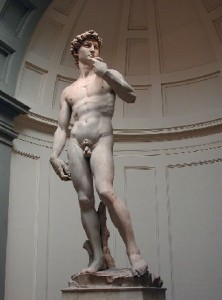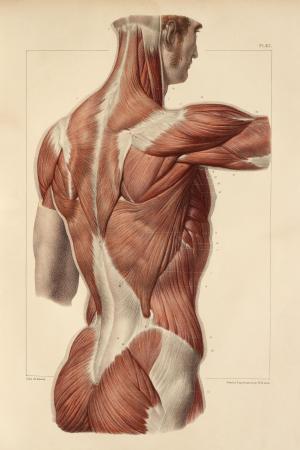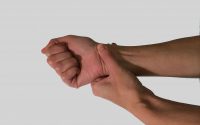The Intrinsic Spiral
The Intrinsic Spiral by George Kousaleos, LMT.
Since 1978, I have looked at and worked with the structural alignment of countless thousands of human bodies. I have also studied with some of the early masters of structural integration and pondered the theories of the great thinkers and creators of this dynamic discipline. Every clinical experience and every lesson led me to the realization that every person’s structural contour has a unique circular pattern that often resembles a clockwise spiral.
The “intrinsic spiral”
Studying under Bill Williams, Ph.D., founder of the SOMA Institute of Neuromuscular Integration, I learned that some 70% of the population had a similar pattern. This pattern, often called the “typical random body”, is distinguishable by an anterior and inferior placement of the ASIS of the left ilium. Generally there is more lateral rotation of the right leg, providing strong hyperextension of the same knee. This same leg often holds 65% of the weight of the body. There is generally increased elevation of the left shoulder, with a more compressed lateral thorax of the right ribcage. This often is accompanied by a stronger medial rotation of the left shoulder, and a slight rotation, or lateral flexion of the neck and head to the right. This pattern is more obvious in those who are strongly right hand dominant, but can also be seen on more ambidextrous individuals, and even in some who are left hand dominant.
The powerful sense of this spiral pattern is how the whole body seems to more effortlessly turn to the right. Even when standing still, it is easy to observe the clock-wise rotation of most body regions. Having been taught the importance of the tensile strength that the colla-gen molecule provides all fascia, and knowing that it shares the clockwise orientation of its triple helix with the double helix of DNA, I have concluded that the clock-wise spiral is natural, indeed intrinsic, to human structure and function.
How many other forces in nature rely on a structural orientation similar to DNA and collagen? I know that trees grow in an ever-expanding circular pattern. I remembered that Einstein believed that the Milky Way constituted a giant, clockwise spiral, and that even some of the long bones in our body grow in a clockwise orientation. And artists from every culture (we’ll excuse the ancient Egyptians for now) created sculptures, frescoes, and paintings that continually show the same dominant, spiral pattern in most human forms.
So is it the responsibility of the structural bodyworker to seek symmetry and eliminate the spiral pattern, or is it to find the right combination of techniques that brings awareness of balance, power, and energy to this human spring? The CORE myofascial techniques are designed to lengthen, open, and balance this spiral pattern. Clients often comment that they feel longer, larger, looser, and lighter. They perceive that they are using less energy for simple movements, creating a state of “effortless effort”.
But more importantly, they have increased their neurosomatic awareness, and they understand the benefits of balancing their structure. These clients have been empowered to rethink their day-to-day behaviours that include chronic structural and functional habits. They have gained the ability to find options that serve their neuromuscular and neuro-sensory systems in a more efficient way. The existence of the “intrinsic spiral” is simply a theory that can allow the structural body worker a vision of how overexertion, underuse, repetitive strain, or trauma can force the body into a more rigid compression that lacks the full ease and fluidity of optimal health.
For 10 years it has been the goal of CORE Somatic Therapies to provide a foundation of information and clinical strategies that support the integration of structure and function. The “intrinsic spiral” is an important part of this foundational knowledge.
George Kousaleos founded the CORE Institute in 1990 after teaching for the SOMA Institute for 10 years. George was the first chair of the National Certification Council and was an officer and trustee of the Massage Therapy Foundation in USA. As General Manager of the 1996 British Olympic Preparation Camp Sports Massage Team and as Co-Director of the 2004 Athens Health Services Sports Massage Team, he has supported the inclusion of massage therapy at the highest levels of international sports. George teaches throughout the world and in Australia, he has given keynote and motivational presentations to national and international organisations. For workshops in Australia, visit here.


